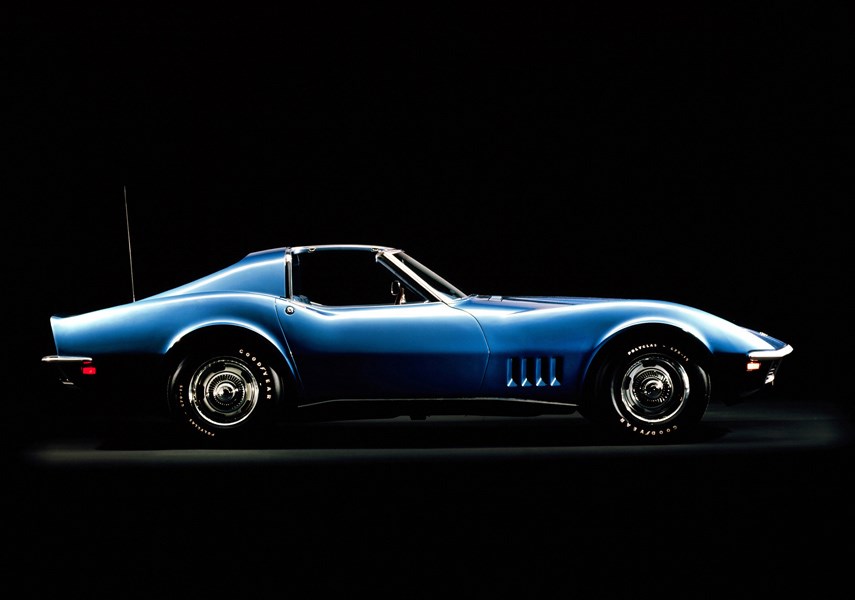Sept. 7, 1968 – If you couldn't get a ticket, maybe you could stand outside the Pacific Coliseum and hear the guitar licks rolling out into the night.
Jimi Hendrix, cranking out the solo to “Voodoo Child,” while the fans stared, entranced. Hendrix had just less than two years to live. Nearby, his childhood neighbourhood was already dying.
Jimi drove Corvettes, not often, and not particularly well – his eyesight wasn't great, and he refused to wear spectacles. He crashed his first one, a blue '68, and when he died he still had a 1969 Cortez Silver Stingray. The whereabouts of this car are lost to time.
I think about that silver Stingray every time I cross the Georgia viaduct, on my way through downtown. The Stingray was the car the Apollo astronauts drove, an earthbound rocket ship that was still within the reach of ordinary people. The Hendrix car, ethereal and missing, flickers in the imagination under the streetlights.
Beneath the concrete viaduct are the bones of Vancouver's first Black neighbourhood. Hogan's Alley was situated at the southwestern edge of the Strathcona area, a working-class neighbourhood that sprang up around the stevedores and porters who worked there. The place had its own culture, restaurants, speakeasies, and the African Methodist Episcopal Fountain Chapel, founded in 1923.
Nora Hendrix, Jimi's grandmother, helped found that church. She often provided room and board to pastors, and was a pillar of the community. Jimi Hendrix spent his summers here as a child, even attending Grade 1 for a while. Later, in 1962, he hitchhiked his way to Vancouver after being discharged from the army. An unknown then, you might have found him practicing his guitar, or gigging with a band at a nightclub called Dantes Inferno.
By 1964, however, Vancouver had begun to dream of freeways. The rise of the personal car had city planners plotting out ways to build new arteries across Vancouver. A new, elevated highway would run across the waterfront, speeding drivers across the city.
There was already a Georgia viaduct, built in 1915, and it was in poor repair. The Hogan's Alley community initially supported the idea of replacing it, but they didn't know the scope of the city planners' ideas.
To build this massive new freeway, communities would need to be displaced. Naturally, without thinking about it too much, the planners drew their lines across the places of least resistance. The road would go where it could be challenged the least, through the homes of people who didn't have much political power.
And so, in 1967, the bulldozers came to Hogan's Alley. They destroyed 15 blocks of housing, as well as part of Chinatown, and construction began on the viaduct. The city had attempted to rezone parts of the area for years, making it difficult for residents to get mortgages, build, or expand their houses. Now, the land was expropriated. Soon, the massive concrete pillars of the viaduct stood where people once lived.
The rest of the freeway project was blocked by angry communities, but the damage to Hogan's Alley was done. By the time The Jimi Hendrix Experience played at Pacific Coliseum, ground was already broken. The viaduct was completed in 1971, about a year after Jimi's death. Vancouver never again had a majority Black neighbourhood.
This is just one story. As Canadians, as we look to the events across the border, it's all too easy to pat ourselves on the back and call the job done. I think of myself as a good person, and odds are you do too.
But every time you drive over the Georgia viaduct, just listen for the sounds of Hendrix's guitar, and see that silver Stingray in your head. Ask yourself whether you could tune in maybe just a little bit better. Jimi wanted to know, Are You Experienced? We might not be, not in that same way. But we can listen for it.
Brendan McAleer is a freelance writer and automotive enthusiast. If you have a suggestion for a column, or would be interested in having your car club featured, please contact him at [email protected]. Follow Brendan on Twitter: @brendan_mcaleer.



